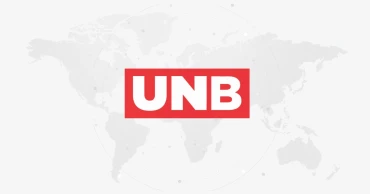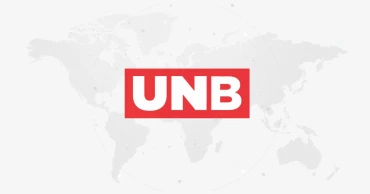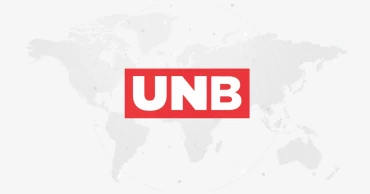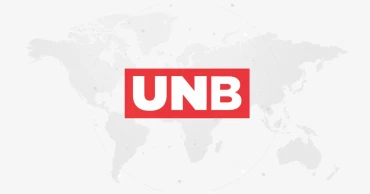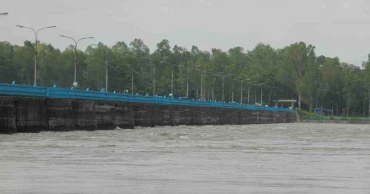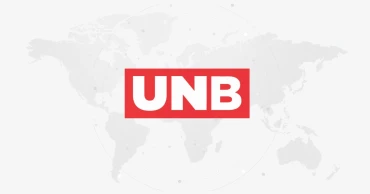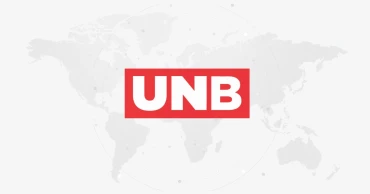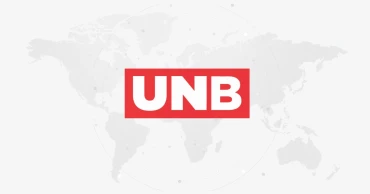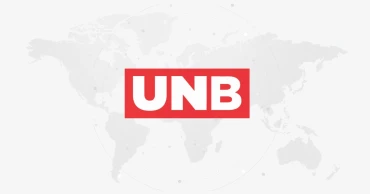Opinion
International Day of the Midwife and International Nurses Day: Accelerate Region-wide improvements in the nursing and midwifery workforce
To mark this year’s International Nurses Day (12 May) and International Day of the Midwife (5 May), WHO is urging countries of the South-East Asia Region to accelerate improvements in the density, skill-mix and distribution of the nursing and midwifery workforce, building on the strong progress made under the Region’s Decade for Strengthening Human Resources for Health (HRH) 2015–2024.
Globally, WHO projects a shortfall of around 10 million health workers by 2030. The world currently faces a shortage of around 900 000 midwives, which represents a third of the required global midwifery workforce. Evidence shows that midwifery-led models of care can avert two-thirds of maternal and neonatal deaths and stillbirths. As highlighted by the COVID-19 crisis, nurses and midwives are critical to building health system resilience and achieving universal health coverage (UHC) and health security.
Since 2014, WHO and its Member States in the South-East Asia Region have intensified action to strengthen HRH, in line with three of eight Regional Flagship Priorities: accelerating reductions of maternal, neonatal and under-five mortality; strengthening emergency risk management; and continuing progress towards UHC. Between 2014 and 2022, the Region improved the density of nurses and midwives by 83%, averaging 20.41 nurses and midwives per 10 000 population.
Throughout the COVID-19 response, countries have continued to implement national HRH action plans, and most have significantly improved HRH data. Nine of 11 Member States have in place a nursing council or other regulatory authority, and eight Member States report regulations on working hours and conditions for nurses.
Six Member States have a chief nursing officer or equivalent position, which all Member States should urgently adopt. Last year, Member States reiterated their commitment to fully implement the Regional Strategic Directions on Strengthening Midwifery 2020-2024, calling for a midwifery-led, primary health care approach to accelerate further reductions in maternal and neonatal deaths and stillbirths.
Today, to strengthen the nursing and midwifery workforce, WHO is calling for action in several key areas.
First, although the Region has made significant progress, we are still short of nurses and midwives. Before the COVID-19 pandemic, the Region needed as many as 1.9 million more nurses and midwives by 2030. New calculations are required after COVID-19 has pressured health systems even more and governments need to ensure population health needs are met to ensure health security in countries. Production rates must be re-evaluated to ensure we can meet the target for 2030. We must also be conscious of nurses, midwives and health workers leaving the profession or leaving the country to work in other countries.
Second, it is important to assess the current composition of health care teams and understand the optimal composition of health care teams to meet the needs of communities based on people-centred service delivery models. Introducing and regulating enhanced scope of practice for nurses and midwives where needed can help fill gaps. Specialist nursing programmes are essential for acquiring additional nursing skills for greater responsibilities in complex health settings. In a conducive environment, advanced practice nursing roles can provide effective health services that are instrumental to achieving UHC.
Third, distributional inequalities exist in addition to health workforce shortages. To increase production, recruitment and retention to rural, hard-to-reach or remote areas, interventions should be interconnected, bundled and tailored to each local context. Policy recommendations can include setting up new nursing and midwifery institutions in rural and hard-to-reach areas; targeting admission policies to enroll students with a rural background to nursing and midwifery education programmes, providing financial scholarships, bursaries or other education subsidies and non-financial incentives for nurses and midwives working in rural and remote areas and providing a safe and secure working environment.
Fourth, nurses and midwives along with health workers need safe, healthy, supportive and dignified conditions of work to provide respectful quality health services with dignity. Conducting assessments of working conditions and environments would give insight to which management and policy actions can be adopted. Interventions may include developing and improving occupational health and safety management systems; investing in areas of enabling work environments, fair and equitable remuneration and providing social protection; enacting and strengthening legislation against discrimination; and safeguarding rights such as providing the right of freedom of forming and joining trade unions and collective bargaining.
As we celebrate the International Day of the Midwife and International Nurses Day 2023, WHO reaffirms the commitment to strengthen these vital health workforce even beyond the Regional Flagship Decade for Health Workforce Strengthening 2015-2024 to progress toward universal health coverage and the sustainable development goals.
Dr Poonam Khetrapal Singh is the WHO Regional Director for South-East Asia
Dr Wazed: Guiding Bangladesh’s entry into the nuclear era
In a war-torn country, the idea of an atomic energy commission seemed extravagant. At a science conference in Dhaka in 1972, headed by the Father of the Nation Bangabandhu Sheikh Mujibur Rahman, a consensus was reached that a separate entity like the atomic energy commission in a newly independent country would be too expensive to continue. Rather, it could merge with the Bangladesh Council of Scientific and Industrial Research (BCSIR).
When all the voices spoke loudly against the idea of a separate atomic energy organization, Dr. M. A. Wazed Miah took a different stance. He stubbornly advocated for a dedicated commission for atomic energy in Bangladesh. He along with the former acting chief of the atomic energy commission, the late Dr. Anwar Hossain, met Bangabandhu to convince him. Bangabandhu obliged and finally, Bangladesh Atomic Energy Commission (BAEC) was established in 1973.
Dr. Wazed also introduced a division for nuclear safety and radiation protection under BAEC.
When Chhatra Dal leaders, equipped with the support of the ruling BNP, pressed for shifting the Atomic Energy Centre (AEC) premises from the Dhaka University campus, Dr. Wazed was the only nuclear scientist in the commission to raise his voice in public against this demand.
Before resigning from the commission in 1999 as its chairman, he established Radioactivity Testing and Monitoring Laboratory (RTML) in 1987 in Chattogram. All the imported food items had to pass through the laboratory of BAEC.
From the subtle, apparently intangible yet quantifiable world of atomic physics to the turbulent sphere of political movements, Dr. Wazed sketched a visionary roadmap leading the nation to remarkable outcomes. While the magnetizing spell of power and limelight pulls many brilliant minds, his world was immune to the faintest influence of such kind. As a researcher in nuclear physics, a seemingly futuristic field for a student to pursue five or six decades ago, he outlined the course of Bangladesh's entry into the nuclear era. The Rooppur nuclear power plant that he envisioned for meeting the electricity demand of this large population is not a faraway dream for the country but going to be a living reality soon. Dr. Wazed is often remembered for his passion for humanity and kindness which became even more prominent during some crucial junctures of history.
As a student of Dhaka University, he was entrusted by fellow students at the dormitory as its vice president, to which he did justice. He was one of the organizers for leading the movement against Ayub Khan's Education Policy in the 1960s during the regime of Pakistan from whose clutches Bangladesh would soon earn freedom through an armed struggle. At the end of his student life, he fully dedicated himself to research, proving his excellence in the arena. Deeply moved by the combination of academic mastery and political activities, Bangabandhu held Dr. Wazed high in his estimation. He later tied the knot with Bangabandhu's daughter Sheikh Hasina, currently the prime minister of Bangladesh. He was a lone voyager with no affinity towards name and fame or power and wealth.
As all hell broke loose in 1975 when some power-hungry army officers massacred Bangabandhu and most of his family members including his 10-year-old child Sheikh Russel, only Sheikh Hasina and Sheikh Rehana survived as they were abroad at the time of the coup. During this most deplorable and inhumane period, Dr. Wazed became a reliable shade under which Sheikh Hasina and Sheikh Rehana took shelter.
Remembering this silent revolutionary on his 14th death anniversary on May 9, his colleague Engr. Md. Muzammel Haque, former Chairman of the Bangladesh Atomic Energy Commission (BAEC) and chairman of the Bangladesh Atomic Energy Regulatory Authority (BAERA) recounted an anecdote reflecting on the level of commitment Dr. Wazed had towards his work.
"I worked with Dr. Wazed for over 12 years. During this journey, I found him to be a creative personality. One day when he was ill and was admitted to the hospital, many went to meet him as well-wishers. But, I decided not to go as I knew that he would bring up work-related issues. Finally, he called me and amid his illness, started talking about our work. His unwavering commitment to work led me to think that wherever he went – be it for leisurely traveling or some other purpose – he never stopped thinking of his work. It is due to his initiative that the head office of the Bangladesh Atomic Energy Commission (BAEC) was established at Agargaon. An Atomic Energy Research Establishment (AERE) was also set up on a 259-acre of land in Savar based on the model of Bhabha Atomic Research Centre (BARC) to intensify the effort to exploit nuclear science and technology for the benefits of the nation," he recounted.
As India’s largest atomic research establishment was named after prominent nuclear scientist Dr. Homi Jehangir Bhabha, the atomic energy research establishment of Bangladesh should be renamed as ‘Wazed Atomic Energy Research Establishment’ to pay the utmost tribute to the eminent nuclear scientist.
His other colleague Dr. Md Azizul Haque, the former chairman of the Bangladesh Atomic Energy Commission (BAEC), said, "Dr. Wazed's dream was to build a nuclear power plant in Rooppur, a dream he couldn't see materialize in his lifetime but now it is being implemented under the leadership of his wife, Prime Minister Sheikh Hasina. In 1974, he was set to visit Germany for a post-doctoral fellowship but his leave was withheld then by the former chairman of Bangladesh Atomic Energy Commission. Despite being a son-in-law of Bangabandhu, who was in power, he showed no interest in harnessing his influence."
According to the chief scientific officer of BAEC, Dr. A. F. M. Mizanur Rahman, if Dr. Wazed Miah's master plan for advancing nuclear science and technology is followed, the country would be unstoppable in its progress along its technological trajectory.
The writer is a nuclear scientist and ex-Cambridge Scholar.
Dr. Zafrullah the warrior stops, his battles will go on
He (Dr. Zafrullah) just never stopped fighting his wars even after liberation. It never probably occurred to him to make peace with his battles and move on. In so many ways, he was the closest to what we would call a permanent warrior. He passed away but his battles will go on.
It began in his college days when he was already infected by idealism which met his "revolutionary zeal". The two made a potent broth that Zafrullah bhai drank and never stopped fighting for his causes, no matter how great his opposition was. And it's amazing when both idealism and his sense of social justice are both collectively comatose, he remained loyal to them no matter what.
Zafrullah bhai stands above most of us because he dared to stand taller than most around him. In all the years that I have known him , he has not hesitated to be himself. He followed the right wagon with as much zeal as he did the occasional wrong one’s because he was a believer in people’s rights.
What separated him from the rest was that he was selfless, totally driven by the idea that health was a right that all had a right to claim. And that it was one of the biggest democratic causes of them all. And he never stopped until death finally called his name.
Read More: People to pay tribute to Dr Zafrullah at Shaheed Minar tomorrow
The man from Sector 2
In some way, Zafrullah bhai was the perennial man from Sector 2, 1971 war. He was the helmsman of the Bisramganj hospital that he helped establish in that war zone, not just treating the warriors but training nurses and paramedics too. For many who were part of the 1971 war, it never really stops and he was one of them.
The war days belonged to the warriors but as soon as the war was over, the new state generated new needs and causes and Zafar bhai became a warrior for them. Fifty years later, it’s impossible to understand the kind of impact he had on society, emerging from the ashes of the war, who needed a voice to speak as audaciously as he did.
The health establishment
He took on the health establishment like none had done before and in this fight, many of his fellow fighters were his old comrades from Sector 2, led by Shahadat Chowdhury, Editor of the weekly Bichitra. Bichitra gave him a platform to reach out and become a vanguard as Zafrullah bhai launched media campaigns, health rights volunteers and also began to mobilize supporters to begin his greatest adventure, the Gonosasthaya complex.
The health treatment infrastructure was not a problem but when he began his pharmaceutical company, he faced massive opposition, both national and international. But with all his warrior instincts, he fought back and though he didn’t triumph, it was not a sweat for a lost cause. Today, many aspects of the general health sector cause dismay, but in some ways, health rights are more accessible for many than they were in the early days of Bangladesh particularly in machine availability.
Read More: PM mourns death of Dr. Zafrullah Chowdhury
The political Zafar bhai
I am not sure how committed he was to politics but I think he truly believed that health rights could not be assured unless political rights were won. So from the early days he supported causes and campaigns, supporting candidates, causes and political platforms right from the birth days of Bangladesh. Till the last day, he was doing what he thought was the right thing to do. Due to media exposure, many will remember him more as the political person he had become in many eyes in the last decade or so than the health rights person I saw he was most committed to as a cause.
We have walked together for long though his increasing political commitments and my lack of interest in political media and talk shows made meetings less frequent. But I remember one day, when we were both being tried in the same case –contempt of court- for a petition we had both signed, and were being searched by the High Court security. His frayed trouser end and his keychain got tangled and as he bent down to separate them he laughed in his own way and said, “Sometimes, I think it would be the best if I could go back to my village and become the local doctor”.
Farewell Zafrullah bhai, you always were our greatest village doctor.
Read More: Home Minister mourns Dr Zafrullah Chowdhury's death
1971 : Two memories of miracles
1971 was part of our life and even the concept of 1971 history as an independent issue was not clear to us. It was so close to our own life that we didn’t see it as history but a narrative of ourselves. We didn’t see us in that because history was always something distant and far away from ordinary lives, our kinds of lives.
But soon things began to change. The big changer was the FF list. Suddenly a group of people began to claim to be FFs apart from the real ones. And then the government declared 2 years of seniority for FFs and conflicts grew along with the number of FFs in every sphere.
It was a great boost to enmity resolution as well. Anyone could be accused of being a collaborator. That’s one reason why the weekly “Holiday” newspaper said that it was a “country of 65 million collaborators”. Once patriotism became a rewarding and paying activity and demonizing became easy, there was no shortage of ‘glory “ and the “glorious” as well as the treacherous and the guilty.
However, it didn’t touch us and we never even discussed our 1971 life when we were DU students. To us it was part of life though to many it had become a way to gain a better life by fair means or foul.
The man who ran from death
I began to search for 197i history after 1977 when I joined the History writing project under Hasan Hafizur Rahman. It was a time when memories of many were fresh and people would often visit our office and discuss the war and how it affected them. People, from senior officers to ordinary citizens would drop in as if it was a sanctuary for memories. Many would speak on for long and sometimes would leave relieved. As if being able to speak was all they needed. I remember one very well.
The gentleman was from Rajshahi and he lived near the campus. He was caught up in the events when the Pak army overcame resistance and captured the city in April. There were random killings and he was arrested and made to stand in a line of people who were to be shot and killed.
After the firing the bodies were dumped into a pit and left to die. The amazing part was that he had not only survived but he was not even wounded. He gained his senses after a while, near the bottom of the pit under other bodies. Instinctively, almost immediately he began to clamber out of the pit shoving several dead bodies aside.
He reached the top of the pit, climbed out and then began to run, not sure where to. But even in the dark, the Pak army noticed and began to fire at him. Luckily he came across a stream/nala and without any idea how wide it was he jumped. He landed on the other side of it, picked himself up and ran again till he could run no more. By then he was far away and safe. He took shelter in some remote village and survived the war hiding there.
After the war was over he returned to the place of his untimely burial and found it had been marked as a “gono kobor”. When people heard his tale, many gathered around as if they were not sure he was still alive or a ghost. He then went to the stream which he had jumped and saved himself and repeated the feat. He couldn’t even reach half away. Years later, he was still wondering at his own miracle.
Actually, this is common in situations of extreme stress. The body produces extra adrenalin and that makes extreme physical feats possible. And a good dose of luck really helps.At Jagannath Hall, March 25th night
On the night of the 25th, after the Pak army had committed the massacre at the Jagannath hall of Dhaka University, they rounded up several other residents, both students and staff and made them bury the dead. After the bodies had been buried, they shot those who had done the work. Of those who had dug the graves, one was Kaliranjan Shil. He was a student and an activist of Chatro Union.
As the bullets were fired, Kaliranjan lost his sense and collapsed and lay with the other diggers, some dead, rest dying. When he gained sense, he saw the dead still lying there and fled. What has always amazed me was that he returned to the Hall a few days later to do some urgent work.
Not all are lucky like the miraculous escapee like him. One Rajkumari’s husband was a staff member of the Jagannath Hall and one of the grave diggers. He took a bullet. His family found him still alive and carried his body to their quarters nearby. He talked to his family members and said he wanted to see his infant son one last time. Rajkumari went to fetch the kid but when she returned with him, he was gone.
Teesta : New trigger for new regional conflict ?
Regional conflict situation may get a boost if India/ West Bengal goes ahead with the Teesta water diversion as per media reports. This will hurt Bangladesh's water share and in the process force it to seek whatever power it can leverage to offset the damage. And that means the entry of China in the game. As can be imagined, it will not be a pleasant addition and escalate the already tense situation in the region including Indo-China relations.
Bangladesh is also being pushed on several international fronts including the Myanmar Rohingya issue. The situation in Cox-s bazar zone is becoming very difficult and is reaching a trigger point for wider violence. It's slowly going beyond the capacity of Bangladesh to handle the crisis. Since there can be no military resolution of the problem, it will require international intervention but that is not in sight.
Since Bangladesh is being wooed by the US to distance itself from China, it creates an interesting balancing act scenario for all the parties concerned. However that opens up an opportunity for Bangladesh as well. If China doesn't deliver the support it needs, the US wins. And if India's Teesta plan goes ahead, India's better friend the US loses as China has already offered a Teesta deal to Bangladesh which may be considered more seriously then. It's tricky to say the least.
The Treaty situation now
Teesta is a stalled scenario as it's been 12 years since the move made by India/ West Bengal to divert more water to its hydropower plants and irrigation projects. Some of these projects have been there for a while new projects have been taken up. Meanwhile, Joint Rivers Commission (JRC), Bangladesh, has moved to lodge a protest with India.
"India did not inform us about their move. We are going to send a protest letter to India expressing our concerns and mentioning how the move will affect the ecosystem of the Teesta downstream," said Mohammad Abul Hossen, a member of the JRC, Bangladesh. Indian newspaper The Telegraph on Monday reported that the West Bengal government decided to set up three hydropower plants in Darjeeling and two of them are likely to reduce the volume of water in the Teesta. Last week, the newspaper also reported that the West Bengal government acquired 1,000 acres of land to dig two canals and divert more water from the Teesta to irrigate farms in Jalpaiguri and Cooch Behar districts.' (Daily Star Bangladesh)
Teesta water sharing agreement won't work
Teesta water serves Bangladesh's North particularly between December and April. The 2011 Teesta Treaty was finalized in 2011 but couldn't be signed due to West Bengal CM's opposition. It lies unattended to since then. In 2021 Modi and Sheikh Hasina had agreed towards a quick resolution and a Framework of Interim Agreement on six common rivers was completed but without West Bengal CM's agreement, this has made no progress.
Water sharing projects with India don't work very well so expecting the direct path to a solution seems unfair. Some of the realities are common for both which includes shortage of water. What West Bengal may be doing is a calculated risky decision assuming that Bangladesh won't be able to do much if West Bengal decides to act on its own.
West Bengal is right that Bangladesh is not on the weighty side of the negotiating table and so the weaker of the two. It leaves very few options for Bangladesh except to turn to other levers including China. Point is, is Bangladesh ready to act or can it act given the current realities?
China, US and Bangladesh
That the decision is not a technical problem is important for all parties to understand. India has done well to manipulate the arguments in such a way to make it seem that it's Kolkata not Delhi which is responsible for the non -implementation of the Treaty. Indian writers have also raised environmental and related issues justifying the delays. However, these are Indo-centric and India's environmental sensitivity record is low and convenient as the Farakka barrage problem shows.
China has proposed a 1 billion dollar project which India and its ally US have been opposing. For both, the issue is about regional influence and not the environment. That is understandable. However, Bangladesh also has a position which because of its weakness, including military, is not heard. This doesn't just apply in case of India which is a big power but even Myanmar who knows which way a confrontation will go should it happen.
The US is emerging as the less useful superpower because it has bought goods but has not played any role in the regional affairs. It's unable to put pressure on India and is much better at dealing with weak states like Pakistan with which it has had many partnerships and political projects.
Bangladesh doesn't fit into any of these bills and its weakness is no secret. It really has no options except to side with China. Dhaka's foreign policy observers say that China doesn't go beyond a point in siding with its allies. If a Teesta Treaty with China triggers a quasi-military reaction from India, China won't intervene. But is such a doomsday scenario realistic? However, the unknown appears more real.
No matter what, a realistic and practical analysis of the China supported Teesta Treaty will become a necessity soon though not much will move before the elections are over.
Teesta : New trigger for new regional conflict ?
Regional conflict situation may get a boost if India/ West Bengal goes ahead with the Teesta water diversion as per media reports. This will hurt Bangladesh's water share and in the process force it to seek whatever power it can leverage to offset the damage. And that means the entry of China in the game. As can be imagined, it will not be a pleasant addition and escalate the already tense situation in the region including Indo-China relations.
Bangladesh is also being pushed on several international fronts including the Myanmar Rohingya issue. The situation in Cox-s bazar zone is becoming very difficult and is reaching a trigger point for wider violence. It's slowly going beyond the capacity of Bangladesh to handle the crisis. Since there can be no military resolution of the problem, it will require international intervention but that is not in sight.
Since Bangladesh is being wooed by the US to distance itself from China, it creates an interesting balancing act scenario for all the parties concerned. However that opens up an opportunity for Bangladesh as well. If China doesn't deliver the support it needs, the US wins. And if India's Teesta plan goes ahead, India's better friend the US loses as China has already offered a Teesta deal to Bangladesh which may be considered more seriously then. It's tricky to say the least.
Also Read: 'Bangladesh keeping close tabs on India's plan to withdraw Teesta water for West Bengal'
The Treaty situation now
Teesta is a stalled scenario as it's been 12 years since the move made by India/ West Bengal to divert more water to its hydropower plants and irrigation projects. Some of these projects have been there for a while new projects have been taken up. Meanwhile, the Joint Rivers Commission (JRC), Bangladesh, has moved to lodge a protest with India.
"India did not inform us about their move. We are going to send a protest letter to India expressing our concerns and mentioning how the move will affect the ecosystem of the Teesta downstream," said Mohammad Abul Hossen, a member of the JRC, Bangladesh. Indian newspaper The Telegraph on Monday reported that the West Bengal government decided to set up three hydropower plants in Darjeeling and two of them are likely to reduce the volume of water in the Teesta. Last week, the newspaper also reported that the West Bengal government acquired 1,000 acres of land to dig two canals and divert more water from the Teesta to irrigate farms in Jalpaiguri and Cooch Behar districts.' (Daily Star Bangladesh)
Teesta water sharing agreement won't work
Teesta water serves Bangladesh's North particularly between December and April. The Teesta Treaty was finalized in 2011 but couldn't be signed due to West Bengal CM's opposition. It lies unattended to since then. In 2021 Modi and Sk. Hasina had agreed towards a quick resolution and a Framework of Interim Agreement on six common rivers was completed but without West Bengal CM's agreement, this has made no progress.
Water sharing projects with India don't work very well so expecting the direct path to a solution seems unfair. Some of the realities are common for both which includes shortage of water. What West Bengal may be doing is a calculated risky decision assuming that Bangladesh won't be able to do much if West Bengal decides to act on its own.
West Bengal is right that Bangladesh is not on the weighty side of the negotiating table and so the weaker of the two. It leaves very few options for Bangladesh except to turn to other levers including China. Point is, is Bangladesh ready to act or can it act given the current realities?
China, US and Bangladesh
That the decision is not a technical problem is important for all parties to understand. India has done well to manipulate the arguments in such a way to make it seem that it's Kolkata not Delhi which is responsible for the non -implementation of the Treaty. Indian writers have also raised environmental and related issues justifying the delays. However, these are Indo-centric and India's environmental sensitivity record is low and convenient as the Farakka barrage problem shows.
China has proposed a 1 billion dollar project which India and its ally US has been opposing. For both, the issue is about regional influence and not the environment. That is understandable. However, Bangladesh also has a position which because of its weakness, including military, is not heard. This doesn't just apply in case of India which is a big power but even Myanmar who knows which way a confrontation will go should it happen.
The US is emerging as the less useful superpower because it has bought goods but has not played any role in the regional affairs. It's unable to put pressure on India and is much better at dealing with weak states like Pakistan with which it has had many partnerships and political projects.
Bangladesh doesn't fit into any of these bills and its weakness is no secret. It really has no options except to side with China. Dhaka's foreign policy observers say that China doesn't go beyond a point in siding with its allies. If a Teesta Treaty with China triggers a quasi-military reaction from India, China won't intervene. But is such a doomsday scenario realistic? However, the unknown appears more real.
No matter what, a realistic and practical analysis of the China supported Teesta Treaty will become a necessity soon though not much will move before the elections are over.
21st February: Is it about everyone or a particular class ?
It’s generally held that Ekushey February is the mother moment of Bangladesh history. It is celebrated nationally to produce the cultural meta imagination of state building called Shaheed Dibash. It;s as much a cultural event as it’s a memorial to the national identity surge that ultimately birthed Bangladesh as the Bengali state.
And that is also seen as a fitting rebuttal to the other nationalist surge which supposedly birthed the previous state seeking aspiration, the Muslim state of Pakistan. Mingled into all this is the collateralization of political domination through culture. Politics in most if not all spaces look for the legitimacy that will push it from the realm of political sociology to that of political theology.
In that process, Ekushey has become the Big Bang of our state making theology of history. Why and how did that happen?
A long history of political claims
The class origins of cultural movements are less studied in our world. Over time, such movements are deified and in the process placed outside scrutiny. Cultural events therefore are seen as a fundamental phenomenon that ultimately ends with claims and credit of state making. This has also been the case of Ekushey. But who did it and why is not asked.
As a sacred issue, it becomes a historical trigger beyond question and remains less examined. Ekushey signifies the primary marker that became the trigger of history which in turn produced 1971. In the end, the claim of 1952 is actually about who owns the state that 1971 gave birth to. Cultural identity is used to describe qualifications regarding the ownership of the state.
State ownership qualifications
State identity markers are multiple and sourced from all dimensions of society. They are from race, ethnicity, language, faith, territory, class clusters etc. Every person carries several of these markers so it becomes a contest of proving which marker is dominant historically hence has the right to claim ownership or dominance.
One purpose of single markers is their unifying role in a nation-state making project. It’s necessary to unite them under one meta banner of uncontested "sacred" identity markers ignoring or diminishing other markers. This has been observed in South Asian history consistently. Establishing a “nation-state” exclusive to one identity allows effective denial of diversity and rights of others even when the demand for a state began with resistance to denial.
Hence the culturalization of politics has become a very important exercise as it defines controlling political state management schemes. Thus they are not "cultural" in its commonly understood sense but act as an aid of political control of a class or group.
Cultural processes have no objective of controlling but its political users do. The process of amalgamating both cultural and political is therefore critical to achieve this. Ekushey as the ultimate national icon fulfills those objectives.
Socio economics of state making identities
Such icons have dominant and subsidiary characteristics. Their proximity to the socio-economic space is important in understanding the semiotics of the event and its purpose. Ekushey also needs to be interpreted by tracing its location, participants and ultimate iconization.
Ekushey is a dominantly a protest movement that began in the Dhaka city as a reaction to the marginalization of Bengali in state institutions and economic accessing system including civil service exams. Its leadership came from the elite educated minority. This narrative established the dominant identity defining the aspired for state. It was this class’s main issue but was projected as the meta national issue of all. Bengali identity was projected as the dominant construction of the national liberation movement and described as the prime marker. In the process the bearers of the elite “salariat” class became prime interpreters of the state objective as well.
Language loyalty meant discarding religious identity. Pakistan was considered "Islamic" and Bangladesh was considered "Bengali" hence it was projected as a either or situation. In reality, putting two identities from different baskets made little sense but it was not a cultural issue but political. So it became a vehicle for state making nationalism. That both were present in Bangladeshis were ignored for the moment in striving for state making by the middle class Ekushe based leadership.
1971 politics of state making
1971 shows that the most robust resistance to Pakistan came from the peasantry who had little to do with cultural markers like language and religion as they were dominated by agriculture not formal state institution based official employment or urban cultural activities. They had little education so language mattered even less. They, to put it mildly, were not “Bengali nationalists” They had no discernible socio-economic stake in the language issue.
Current research shows that the peasantry interprets the world differently from the middle class and produces and follows their own historical streams. What is also clear is that a state is not a monolithic interest or identity driven project but one which encapsulates many ideas and identities. If that is so, the search for the nature of the state and its actual identity must continue instead of settling for a single class’s version of history, culture and more importantly politics.
Read more: Research is vital to preserve, revitalise and develop mother languages: PM
No room for confusion over whether the president’s post is profitable or not
The Awami League candidate Md Shahabuddin was elected unopposed in the recent presidential election. Shahabuddin is a former commissioner of Anti-Corruption Commission (ACC). According to the ACC Act, no commissioner shall be eligible for appointment to any office of profit in the republic after retirement.
Now after Shahabuddin was elected president, there has been a new discussion on whether the position is “profitable” or not. The constitution does not say anything about whether the post of president is profitable or not. But it has been debated before and in 1996 the High Court ruled in a writ petition that the post of president was “not profitable”.
Awami League nominated former Chief Justice Shahabuddin Ahmed for the president after coming to power in 1996. Challenging the matter, it was said in a case that after retiring from the post of chief justice, one cannot sit in any profitable position in the state.
According to the law, the Election Commission has expressed its opinion on whether the post of president is “profitable” or not. “The post of president is not profitable. This is a constitutional position. In that case, there is no legal obstacle to Shahabuddin’s assumption of the office of president.”
“The court has already given a decision about a retiring chief justice. A former commissioner will be held to the same standard… Md. Shahabuddin’s election to the presidency is valid,” Chief Election Commissioner (CEC) Kazi Habibul Awal said on February 15, 2023.
As per the judgment, the current president-elect, even though he was an ACC commissioner, has no legal bar to assume the presidency. When the Election Commission selects nomination papers of candidates for the post of president, it takes the decision considering the law.
Read: Controversy over President-elect unexpected: CEC
The law clearly states what is meant by the term “profitable”. In the case of posts of profit, it is said that if the government has more than 50% of the money in an institution engaged in the work of the republic, then the appointment will be called a “post of profit”. The president’s or the prime minister’s posts are constitutional. Since they are constitutional posts, they do not come under the definition of “profitable posts”.
If there is not more than one candidate, and after selecting the nomination papers, if it is found that the nomination papers are correct and valid, then he/she will be declared elected at that time. There is no need to wait for it to be withdrawn. The Awami League nominated Md. Shahabuddin on February 12. The Election Commission (EC) announced him as the next president on February 13, as he was the only candidate for this post. The current president Abdul Hamid’s term expires on April 24.
When the World Bank removed itself from the Padma Bridge project on false allegations of corruption, Md. Shahabuddin – as an ACC commissioner at that time – proved that there was no corruption in the project. Because of his role, the allegations were proven false in Canadian court, and Bangladesh’s image was restored. As ACC Commissioner, Md. Shahabuddin gave courage to PM Sheikh Hasina.
Awami League under the leadership of Sheikh Hasina has been in power for more than 14 consecutive years. Sheikh Hasina’s visionary decision-making was again demonstrated during the nomination of the new president. A president is the symbol of unity and sovereignty of the country. That is why she chose someone eminently qualified for the president’s post.
Read: BNP maintains silence on President-elect Shahabuddin
After Bangabandhu’s daughter Sheikh Hasina assumed office in 1996, she nominated Justice Shahabuddin Ahmed as president to keep the presidency above party identity. That nomination was an exceptional decision then. The election of a president without party affiliation was widely applauded. Leaders and activists received a message on what will be the form of party nomination. She also gave a message to political parties and civil society who are “concerned” about the elections.
The next national election is a big challenge for the Awami League and the government. By choosing a man experienced in politics, administration and law as the head of state during that election, Sheikh Hasina has once again demonstrated her statesmanship. The message is: she still has more surprises in the bag.
Hiren Pandit is a columnist and researcher.
Hero Alam's crusade goes on
So this guy Hero Alam, a bad singer, an even worse actor with a scruffy look is riling up the establishment like few have done before. They call him “uncouth, uncultured, lower class, uneducated “and the rest but his admirers don’t seem to care. He has become a hate figure to many particularly of the shushil class of Bangladesh’s urban elite who see everything wrong with what he represents or his persona does. But they can't stop him in any way. That’s what hurts.
The closest they came to was when he was taken in and told by the police not to sing those songs which offend shushil sensitivities particularly of the Tagore variety. Apparently, several top notch shushils and singers had complained about his music to the police. He was released but after he had to promise to follow musical rules framed by the police of all forces of law and order of the state. One is lucky that it was not RAB which took him in. Luckily US sanctions were in place.
A thorn in the flesh
That arrest turned into a mishap for the establishment as social media lit up and Hero Alam himself went on various social media chat shows and described his situation and experience. It was ludicrous to say the least to get the police involved in the matter by the government. If bad music is a law and order problem, speeches and jokes often used by many political leaders should keep the police busy for many hours everyday.
Sadly, worse followed for the establishment. The singing matter ended there but the next thing one hears is that Hero Alam was trying to stand in the parliamentary by-elections. Lot of jokes later, when the results came out, it showed that Hero Alam was beaten but narrowly, by less than a 1000 votes. The candidate who won, was a non-entity at the national level but Hero’s loss became bigger news than JSD’ candidate Tansen’s victory. Since Tansen was an AL supported candidate, people did the usual electoral math and concluded that Hero Alam was forcibly defeated to keep him out of the parliament.
Of course manipulation was denied by the EC who also tried to sound a touch dismissive but worse for everyone concerned, Hero Alam came out looking better than ever. And people believed Alam’s words rather than the EC’s.
Read more: Hero Alam: Making shushils and politicians uneasy
It seems something bigger is going on around the person and his ‘antics’ than singing and voting. This ‘uppity ' man from somewhere outside Dhaka and the rural backwoods , with an uncertain profession, a slightly sleazy love life, and headline grabbing skills has made the establishment look rather silly and downright cloddy. As if that isn’t enough, someone gifts him a microbus and Alam donates it which no one does. And all this before he even makes it to the House.
The establishment hits back
UNB reports says that the Highway Police fined Ashraful Hossain Alam aka Hero Alam for speeding on his way to Chunarughat upazila from Bogura in Habiganj on Tuesday. He was fined Taka 2500. He had gone to Narporti village in Chunarughat to receive a microbus from the Abdul Jabbar Gaucchia Academy Principal M Mokhlichhur Rahman who announced it on FB as a token of his esteem and standing in the election. In response Hero Alam received the car and then announced it would be used as an ambulance or to ferry dead bodies to graves.
The police move was one of the worst examples of taking an action which smells of vindictiveness. In a country where ministers think nothing of going the wrong way in their official flag flying car in high traffic of Dhaka, bikes use the pavement as a sub-road and cars park on pavements making it impossible to use, the concept of traffic rules violation doesn’t even exist. And in that ecology, a speeding ticket doesn’t even qualify as a joke. So why is the establishment so worried about him?
The rise of the under class
Hero Alam signifies the rise of the underclass, both as individuals and through cultural idioms. The monopoly which the shushils enjoy in terms of deciding what qualifies as proper particularly in culture was first threatened by the rise of the rural religious cultures. Apart from politics, Hefaozot’s Dhaka siege showed that they were rising and could travel down both physically and socially.
However, It’s easy to dismiss the waz crowd or the Hefazot and Tabligh culture because they occupy a religious hence alien space to the “modern and secular” shushil culture which includes political parties and clusters too. But this is where the Hero Alam threat is pushing them.
He is not alien in terms of cultural form to the urban elite or shushils all over Bangladesh. Hero Alam may do it badly but he does whatever they all do in their common space. He sings their songs, mimics their heroes and icons and even womanizes like them. One may dislike him and most shushils do but one can’t dismiss his cultural form because it’s the same as that of the shushil elite.
Hero Alam and his tribe are coming and may soon overrun the shushil monopoly which is why so much anxiety pervades their camp. But his horde is probably unstoppable going by the way history has gone. The underclass may prevail over the fancier sounding and looking class. And that is what it's all about.
Creating skilled manpower for a ‘Smart Bangladesh’
The government has set a target to build a ‘Smart Bangladesh’ by 2041. Work has already started towards this end. About one crore Bangladeshis are working abroad in different countries of the world. About 7.6 million of them have no job training and the remaining have received training in any of the four categories of technical education, languages, computers, and driving. Among the expat Bangladeshis, the number of doctors, engineers, teachers and degree holders in vocational education is quite low.
Various developments in technology have brought about revolutionary changes in the economic, political and social structures of the whole world. Now the global value of technical know-how is easily understandable. It is possible to increase the inward remittance from the manpower sector several times.
The fourth industrial revolution is now coming to the fore in the world. Keeping this in mind, the government is developing skilled manpower. People of the country should be more skilled in technical and tech-based education and training, so that they can keep up with the changing world. Skilled manpower can contribute to the development sector of the country.
Changes in our education system is needed to create a more skilled human resource. Higher education institutions can play a major role in this regard. That is why reorganizing higher education is imperative to survive in an increasingly competitive world. Realizing this need for skilled human resources, the Ministry of Education and the University Grants Commission have started reorganizing the education system with the aim of developing manpower suitable for the fourth industrial revolution.
Bangladesh is continuously connecting with the global economy. Our communication channels are: export, import, investment, and temporary migration. Bangladesh’s imports are much more than exports. Therefore, increasing investment (foreign) in the country and exporting manpower are the main means of strengthening the economy. Foreign investment will increase only when the country has sufficient resources, such as mines or land, capital, or manpower. Unskilled manpower does not encourage foreign investment. In this case, only investment will be made in labor dependent sectors. In countries where labor skills are high, there is also more foreign investment. The same is the case with manpower exports. Workers are needed abroad. However, the demand for skilled workers is constantly increasing. Skilled workers earn about 10 times more than unskilled workers. The skill of the worker depends on the quality of education. So, changing the quality of education is important, and it will not be possible to change the education system through conventional thinking.
The fourth industrial revolution is giving a new dimension to human civilization. The processes and possibilities of this revolution are already being widely discussed worldwide. Discussion is going on in our country too. Through this discussion, the prime minister and the adviser on information and communication technology are working tirelessly to create awareness among the people and make Bangladesh suitable for leading the fourth industrial revolution.
As we know, the fourth industrial revolution is a fusion of physical, digital and biological spheres. It is difficult to separate these three. What is the result of this? What kind of changes are happening in society? This results in intellectualization, human-machine interfaces, and the merging of reality and virtuality. To prepare us for the fourth industrial revolution, emotional intelligence, physical intelligence, and social intelligence must be introduced.
There are a few things we can do to prepare this generation for this unknown future. Information is a powerful element of civilizational change.
The technological upheaval of the fourth industrial revolution is everywhere. This revolution is causing drastic changes in the world of thought, production, and service delivery. People’s lifestyles and the nature of the world are changing too.
Artificial intelligence, robotics, the internet of things, virtual reality, 3D printing, genetic engineering, quantum computing, and other technologies are part of the revolution. The scale of this revolution, technology-based modernity and its associated complex system are also presenting a major test for the ability of the governments around the world.
This is especially true when the government is committed to inclusive development by “leaving no one behind” in light of the Sustainable Development Goals (SDGs). Sustainable development, reducing inequality, safe work and responsible consumption and production are key challenges to implementing and achieving the SDGs. Platforms like 'Kishore Batayan' and 'Shikshak Batayan' have been developed in collaboration with a2i to make education easier.
As technology has become accessible to every citizen of the country, tech-based services are being made available to marginalized groups. Technology has become a trusted medium in all citizen services and lifestyles. In response to the fourth industrial revolution, the information technology sector of Bangladesh has emphasized various infrastructural developments, including the development of skilled human resources. Bangladesh is striving to be among the top 50 countries in the United Nations e-Governance Development Index in the next five years.
Five initiatives of ‘Digital Bangladesh’ have been internationally acclaimed. They are Digital Centre, Service Innovation Fund, Empathy Training, TCV (Time, Cost and Visit) and SDGs Tracker. With the help of information technology, young people are building small and big IT firms, e-commerce sites, app-based services and other organizations. Besides, some major achievements include Bangladesh's first satellite in space.
If the data protection law is passed, foreign authorities including Facebook, YouTube, and Twitter will be forced to have offices in this country and keep the country's information in local data center. Creating awareness among the people is going to make Bangladesh suitable for leading the fourth industrial revolution and creating skilled manpower.
Reskilling, upskilling and deskilling methods should be kept in mind. Existing learning programs should be accompanied by other digital-based systems, such as e-learning and online learning systems. That is, educational programs should be designed to develop technically skilled manpower.
We have to follow the technical education model of different countries including Germany, Japan, Singapore, Australia, China, South Korea, and Malaysia. The technical education rate in Germany is 73 percent. It is necessary to adopt a master plan to raise the education rate to at least 60 percent in the country. Countries like Malaysia, Singapore and China have developed technical education at the root of their development.
In preparation for the fourth industrial revolution, the Bangladesh government is going to include coding in the school curriculum. Investment in information and communication technology infrastructure in schools has increased under the Digital Bangladesh project. But the reality is that the education system of rural Bangladesh has not yet prepared our children and youths for the fourth industrial revolution. The rate of participation and use of technology has increased but the quality has not changed.
Uneven technology investments are difficult to sustain in the context of such a fragile public education system. It will further increase social inequality. Public technology investment in health, education, and trade is pushing Southeast Asian countries towards the fourth industrial revolution. Malaysia has been able to achieve great improvement in the field of education within just one year of technological reforms during the pandemic.
There is hope. Recently the five-year plan for the 'National Artificial Intelligence Strategy' has been undertaken by the government. But without solving the root problem, these plans will not bring much benefit.
Bangladesh has not developed enough human resources with innovative knowledge, high skills, deep thinking and problem-solving skills. Therefore, the government has to hire experienced and skilled consultants from neighboring and other countries in various development projects and foreign investment areas. According to economists, more than 5 billion dollars are going out of the country due to this.
Bangladesh's increasing progress and success in socioeconomic development is globally recognized. Bangladesh's agriculture-based economy is gradually changing to an industrial and service-driven economy. On the other hand, the most rapid change is happening in the technology sector.
Japan overcame all natural odds by converting its population into skilled manpower. This example from Japan is most relevant to us. If we can convert the vast young population of Bangladesh into skilled resources, it is not impossible for us to become a developed country.
Our curriculum is not very coherent with the kind of knowledge and skills required in the industry. Bangladesh is still far behind in artificial intelligence, IoT, and blockchain technology.
Hopefully, the government is giving importance to three things as the basis of the fourth industrial revolution. These are: development of the industry through innovation, creation of a trained workforce, and the conservation of the environment. The implementation of this announcement by the Prime Minister requires massive public-private joint ventures. Only then will we be able to reach our desired goal, we will be able to build the “Sonar Bangla” of Bangabandhu's dream.
Our Ministry of Education, National Skill Development Authority, Bangladesh Economic Zone Authority, and Hi-Tech Park should unite and take short, medium and long-term plans for the development of technical education with the understanding of the fourth industrial revolution wholeheartedly, and the government should increase the development budget in this sector. Otherwise, we will lag behind in the competition and face challenges in attracting foreign investment.
Information technology has brought a new dimension to the economic activities of the country. The convenience of financial transactions as a result of mobile banking has made life easier for common people. Advances in information technology have led to a proliferation of startup culture. Women are also involved in information technology. The presence of women entrepreneurs is increasing. There are about 20,000 Facebook pages for shopping in the country. Work is going on efficiently. This is how our beloved Bangladesh will move towards Smart Bangladesh.
Hiren Pandit is a columnist and researcher.
